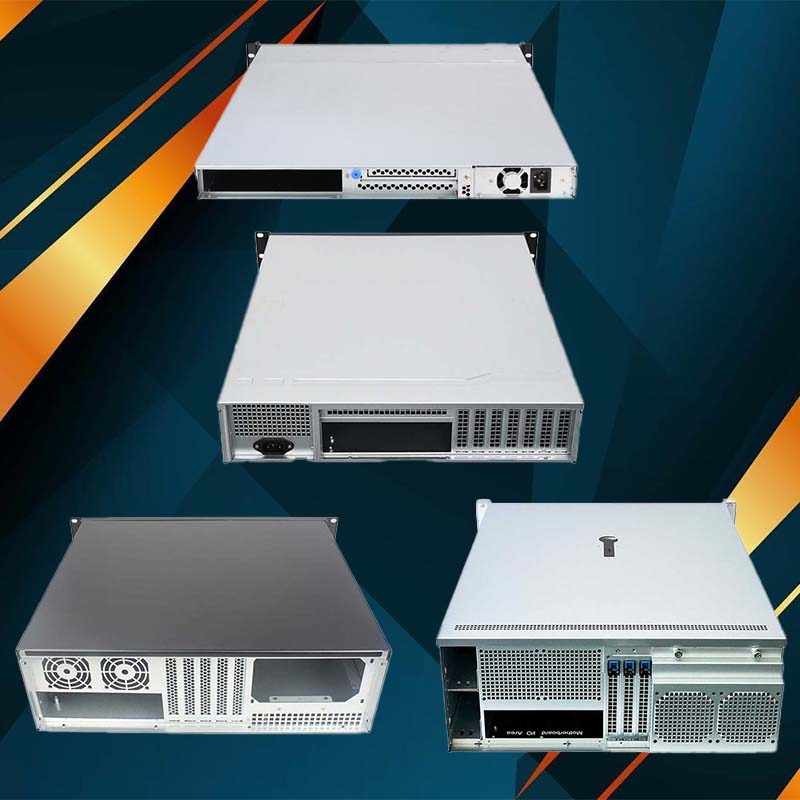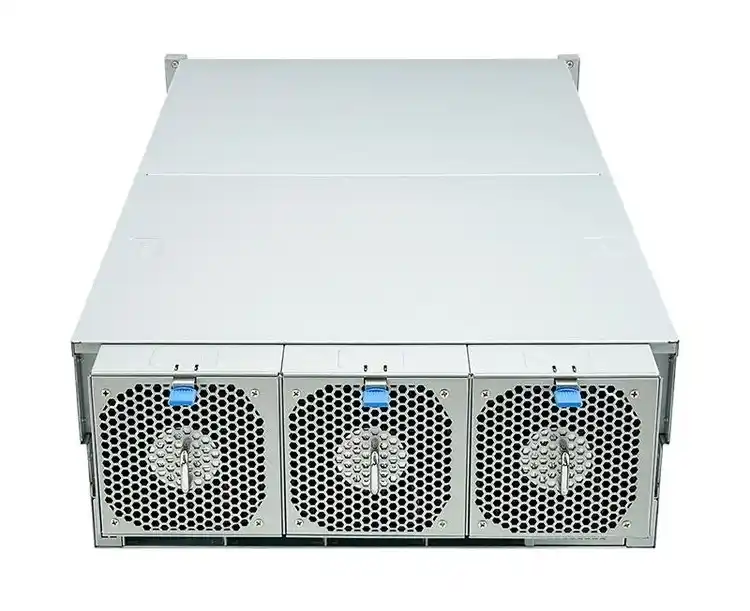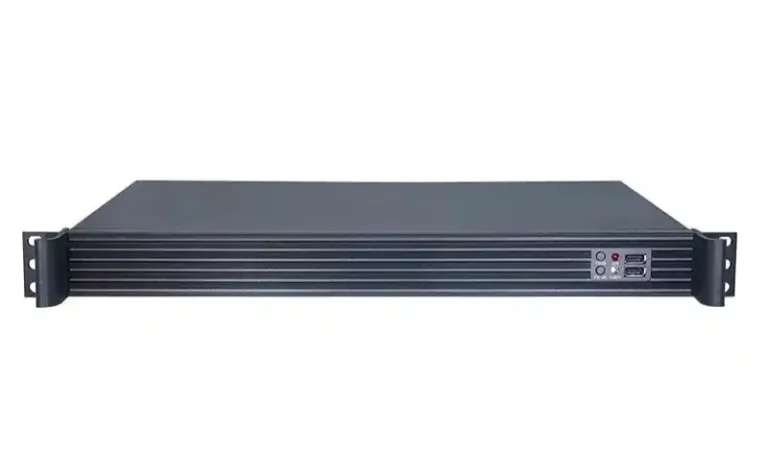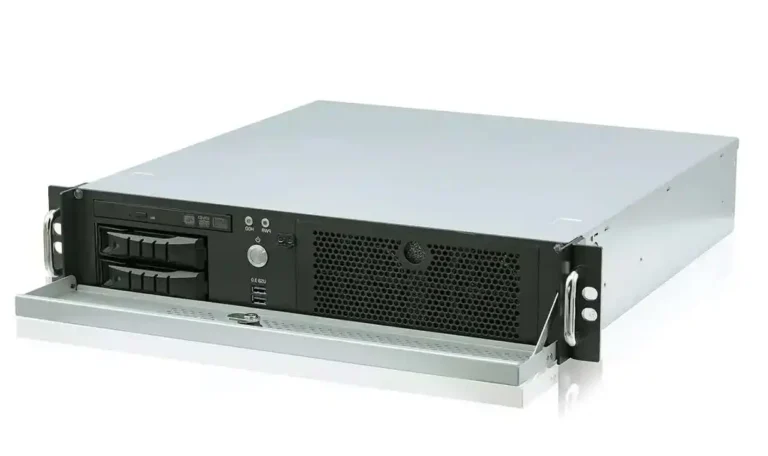From the lens of real builds, field failures, and factory audits. Light on fluff, heavy on checks.
If your server rack pc case looks great but won’t seat rails, trips EMI at bring-up, or cooks the NICs at 2 a.m., it isn’t quality. It’s just… shiny. Below is a practical QC playbook you can run on 1U/2U/3U/4U chassis—straight from standards into shop-floor steps—plus how we roll it at IStoneCase (OEM/ODM for GPU and storage enclosures).
EIA-310 / IEC 60297 Rackmount Dimensions (Fit-First QC)
Why it’s non-negotiable: If the ears, hole pattern, or RU height are off, your rails bind, your PDU kisses the sidewall, and your ops team says words we can’t print.
Shop-floor checks
- 1U = 44.45 mm; face width 19″; verify hole-to-hole pitch (tri-hole pattern) with Go/No-Go gage.
- Check ear squareness to the datum; ±0.5 mm over ear height is a common internal limit.
- Rail pilot test in a standard rack; don’t eyeball—fully load and slide.
Scenario
- You spec a server pc case for a co-lo with mixed square-hole racks. Our tech runs a blind-mate rail test, fully caged nuts, then a 20-cycle slide to prove no racking. Little boring, extremely effective.
Helpful links for your build lineup
- Explore base families: Rackmount Case
- Depth-constrained nodes: 1U Rackmount Case
- Mid-density compute: 2U Rackmount Case
- Storage-leaning trays: 3U Rackmount Case
- Fat bays / big fans: 4U Rackmount Case
- Custom rails, bezels, IO: Customization Server Chassis Service
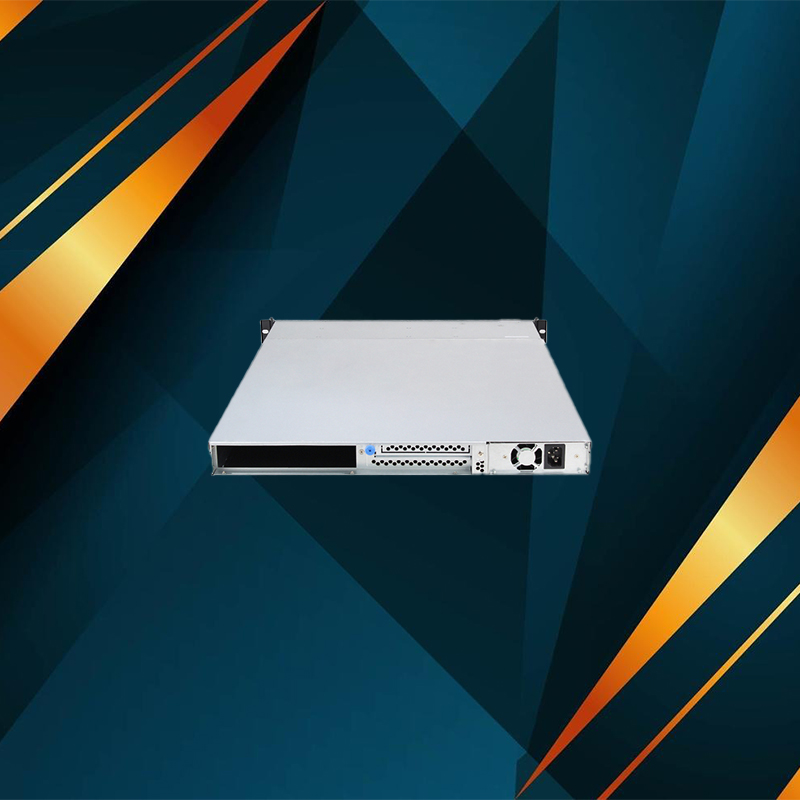
UL 2416 and IEC/UL 62368-1 Safety Requirements (Don’t Skip the Basics)
What we verify
- Sharp-edge removal on all touch points (glove test + tape pull).
- Ground continuity (<0.1 Ω typical build target across door → frame → PSU lug).
- Load labeling matches the actual mechanical rating (shelf and rail).
Real-world
- You add heavier GPUs in a computer case server; we re-check tip-test and load deflection on the ears. No one likes a sagging front panel. Looks ugly, fails worse.
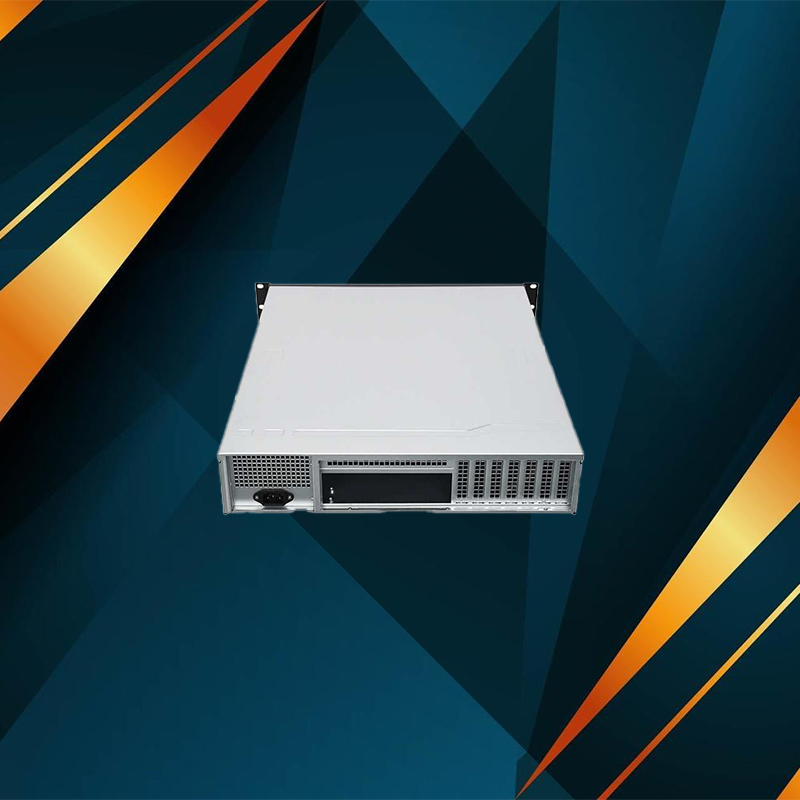
ASHRAE Thermal Guidelines for Data Processing Environments (Keep the Silicon Happy)
Targets & tactics
- Inlet air 18–27 °C (A1–A4 class guidance).
- Prove pressure and path: seal blank bays, close cable cutouts, and add diverters for hot-aisle/cold-aisle discipline.
- Measure ΔT (inlet → exhaust). If ΔT < 8 °C on a loaded 2U build, likely you’re bypassing air.
Scenario
- A GPU node throttles only at night. We slap temp stickers at NIC, DIMM mid-bank, and VRM heat-sink, then log a 2-hour synthetic run. Found a tiny bezel leak. One foam strip later, stable. Kinda boring fix; huge win.
FCC Part 15 EMI/EMC Practices (Quiet Boxes Ship Faster)
Mechanical measures that matter
- Conductive gasket continuity across door seam; paint break at bonding points.
- Screw path control (thread-forming screws into PEMs, not loose sheet-metal).
- 360° clamp for high-speed I/O cables; don’t trust zip ties for RF.
Pro tip
- Keep fan-wall wires short and twisted near the plane. Long, floating harness = accidental antenna. We see it, we cut it, we re-route.
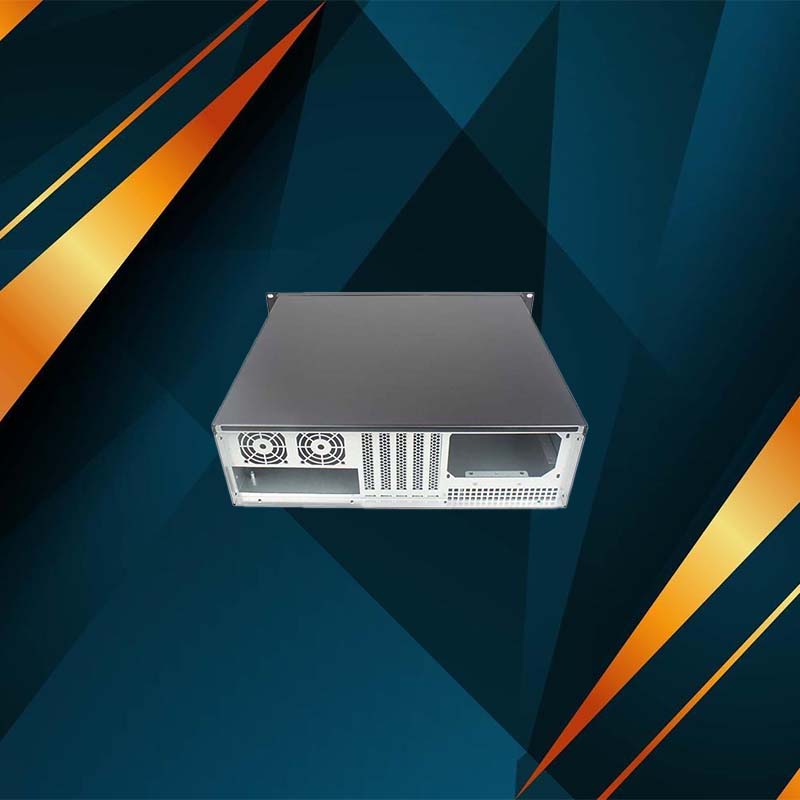
Powder-Coat Durability (ISO/ASTM Methods)
Quantifiable QC
- Film thickness: 60–80 μm typical using magnetic gauge.
- Adhesion: ASTM D3359 cross-hatch, 4B–5B pass.
- Salt fog: ≥1000 h suggestion for coastal/DC installs (correlation, not life prediction).
Why you care
- Rough logistics + sweaty data halls = chips and rust if the coat’s thin. Also, poor electrical bonding if paint isn’t masked at ground lugs.
Material Standards: SECC / SGCC (JIS) and atx server case Builds
Selections
- SECC (electro-galv.): clean bends, nice EMI performance; sweet spot for most atx server case and backplanes.
- SGCC (hot-dip): tougher on corrosion; slightly trickier cosmetic.
Incoming QC
- Verify thickness with micrometer across flat + hem; spot-check zinc layer; confirm heat lot. Tiny paperwork? Yes. Big traceability, tho.
IEC 60068-2-6 Vibration & MIL-STD-810H Shock (Survive the Trip, Not Just the Lab)
Profiles we run
- Sine vibe across 3 axes (unit + rails), watch for connector backshell fretting.
- Drop/impact in the shipping carton, then power-on test (no intermittent fans, please).
Field note
- If your server rack pc case squeals after trucking, it’s 90% a shifted fan-wall or a PSU latch not fully seated. Small shims fix squeal; torque spec fixes the rest.
ISO 2768 General Tolerances (Because Not Every Dimension Is Called Out)
How we apply
- Drawing default at m-class unless the BOM says otherwise.
- GR&R on key gages; no “caliper of the day” variance.
Benefit
- Faster PPAP/FAI sign-off, cleaner handover to mass production. Less drama.
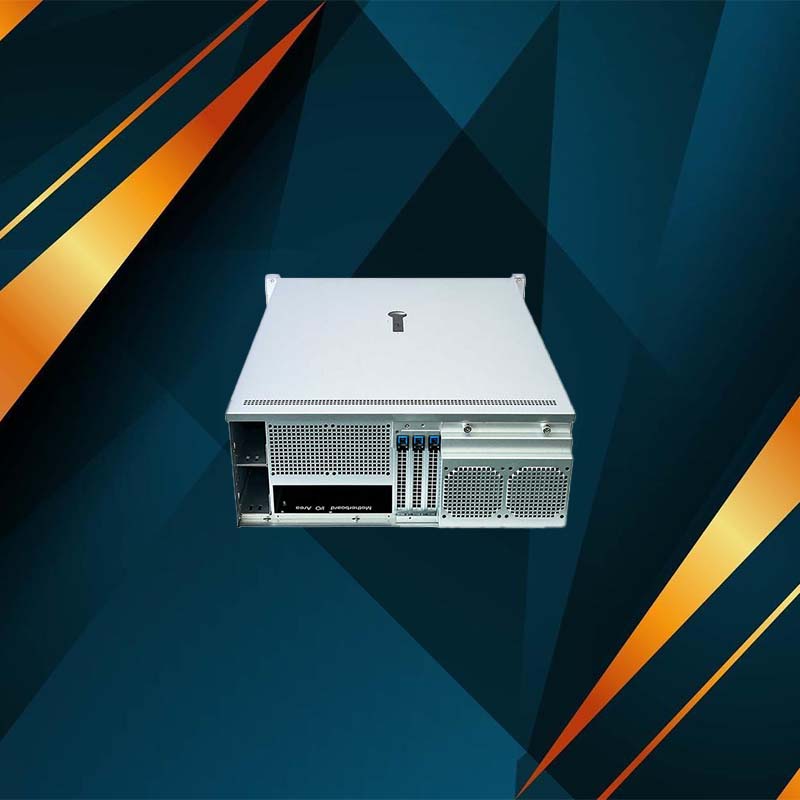
TIA-942-C Data Center Integration (Play Nice With the Room)
Checklist
- Cabinet width allowance (≥800 mm typical for dense network areas).
- Clear labeling, RU markings, and cable routing trays.
- Doors: perforation ≥65% open area for high-flow skids.
Why ops loves it
- Faster IMACs, fewer hot spots, cleaner pathways for those fat GPU power leads.
QC Checklist Table You Can Run Today
| QC Area | Measurable Point | Accept/Target | Notes for Line & Audit |
|---|---|---|---|
| Rack fit (EIA-310) | 1U height; 19″ width; hole pitch | 44.45 mm; 482.6 mm; tri-hole within spec | Rail install 20 cycles, no bind |
| Ear squareness | Ear vs. face | ≤0.5 mm skew across ear | Use angle block + feeler |
| Ground path | Door→frame→PSU lug | <0.1 Ω typical | Paint break + star washer |
| EMI bonding | Gasket compression | Full, no gaps | Visual + continuity |
| Thermal | Inlet temp; ΔT | 18–27 °C; ΔT ≥8 °C | Seal blanks, foam diverters |
| Coating | Thickness; adhesion | 60–80 μm; 4B–5B | Mask ground pads |
| Materials | SECC/SGCC thickness | Within drawing tol. | Lot traceable |
| Vibration/shock | Sine sweep; carton drop | No loose hardware | Power-on after test |
| Tolerance default | ISO 2768-1 m-class | Apply to “unspecified” | GR&R for gages |
| DC integration | Door perf; width | ≥65% perf; ≥800 mm cab | Label & RU marks |
Product-Driven Scenarios (So It’s Not Just Theory)
1U Rackmount Case — “Air is king”
A 1U server pc case lives or dies on pressure. We test with partially blocked bays to simulate “someone forgot a blank.” If ΔT collapses, we add a tiny baffle behind the front bezel. Looks silly, works good.
👉 Browse: 1U Rackmount Case
2U Rackmount Case — “The sweet spot”
2U gives you real fan-wall. We validate cable-cutout seals and NVMe cooling at full pcie load. If one corner runs hot, consider a staggered fan curve rather than yanking max RPM—noise matters in edge closets.
👉 See: 2U Rackmount Case
3U / 4U Rackmount Case — “Storage and serviceability”
Here the pain point is service time. We run tool-less tests: can you pull a drive sled with gloves? Do the caddies wobble under shock? Big bays, big leverage—so latch geometry matters.
👉 Options: 3U Rackmount Case and 4U Rackmount Case
OEM/ODM Customization — “Spec what you really need”
Need a custom ATX server case layout with front IO and odd rail offsets? We do DFM + PFMEA before metal cuts, then first-article (FAI) against this exact checklist. Saves you re-spins and red-faces.
👉 Start here: Customization Server Chassis Service
Why IStoneCase Puts This Front-and-Center
- OEM/ODM at scale. From GPU server case to NAS trays, we build for data centers, AI labs, MSPs, and builders.
- QC you can audit. Every lot ships with film-thickness logs, torque maps, and rail-fit photos.
- Speed without roulette. We iterate faceplates, fan-walls, and brackets fast—without gambling on tolerance drift.
And yes, we’ll tailor this playbook to your computer case server or server rack pc case spec. You bring the workloads; we bring the metrology and the fixtures.
Final Take
Quality isn’t a sticker. It’s a stack: standards → drawings → fixtures → habits. Follow EIA-310 / IEC 60297 for fit, UL 2416 / 62368-1 for safety, ASHRAE for thermals, FCC Part 15 for quiet, ISO/ASTM for coat, SECC/SGCC for metal, IEC 60068 / MIL-STD-810H for shipping, ISO 2768 for the gaps, and TIA-942-C for the room. Tie it all together with a living checklist and real measurements.
When you’re ready, pick the frame—1U, 2U, 3U, 4U—or let us cut a custom path. We’ll help you ship a case that slides right in, stays cool, stays quiet, and just works. Don’t over tighten the screws, tho.

